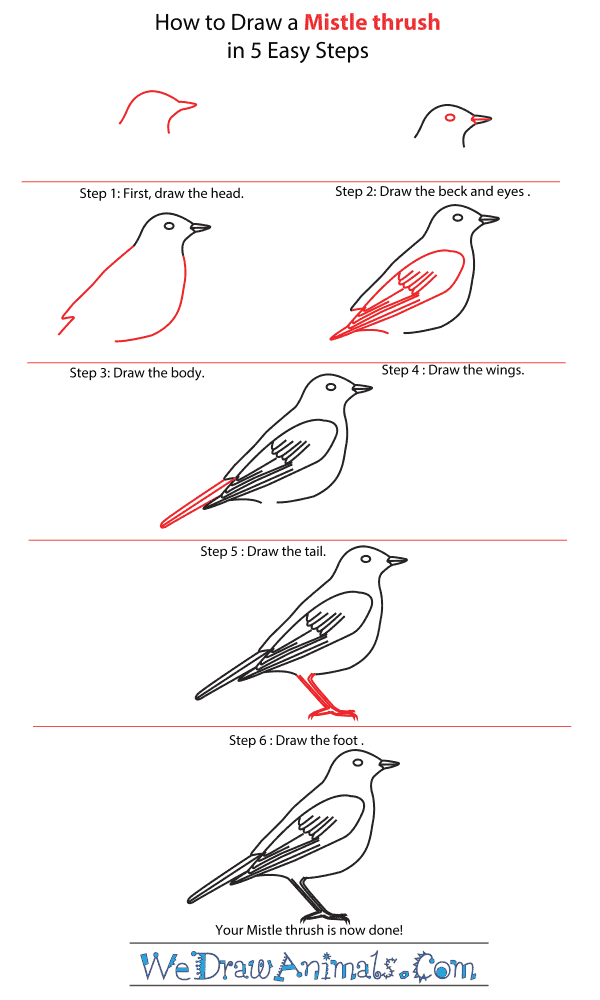In this quick tutorial you'll learn how to draw a Mistle Thrush in 6 easy steps - great for kids and novice artists.
The images above represent how your finished drawing is going to look and the steps involved.
Below are the individual steps - you can click on each one for a High Resolution printable PDF version.
At the bottom you can read some interesting facts about the Mistle Thrush.
Make sure you also check out any of the hundreds of drawing tutorials grouped by category.
How to Draw a Mistle Thrush - Step-by-Step Tutorial
Step 1: The Mistle thrush is started with the head. The head is round with a small, pointed beak.
Step 2: Next, we draw the face. The eye is a small oval and the beak has a straight line in the middle with a point on the end.
Step 3: Then we are going to draw the body. It has a round belly and a sloped back.
Step 4: The next step is to draw the wing. Draw a teardrop shape and add the feather details.
Step 5: We are going to draw the tail feathers next. They should extend from the body and come to a point.
Step 6: The last step is to draw the legs. They are slanted from the body and have claws on both sides of the foot.
Interesting Facts about the Mistle Thrush
Mistle thrush is commonly found in parks, farming areas in Europe, Asia and North Africa. Their upper body is greyish brown in color and their under parts are off-white with black patches. They have dark brown eyes, black bill and yellow-brown feet and legs. Their diet includes invertebrates, berries and seeds. Their predators include humans, owls, eagles, falcons and cat. They are 27-28cm long with a wingspan of 45cm and their weight is 93 to 167 g.
Did you know?
- A few of the populations of mistle thrush migrate southwards during winter season.
- Both males and females have same colors for feathers.
- Mistle thrush is also called ‘stormcock’ due to the male’s ability to produce a sound that can be heard far away (~2km) in humid and windy weather.
- Their favorite fruit is mistletoe berries and that is how they got their name, ‘Mistle thrush’.
- Males produce calls to impress females, to mark their colony and to keep their bond with their partner.
- They either fly alone or in pairs or sometimes in groups of 50 individuals.
- They stay with their partner for about a year, which is why they are considered to be monogamous.
Lesson plan note: Teachers/ Caretakers should take children out on a stroll to the nearest park and help them find birds and observe their characteristics and behavior.







